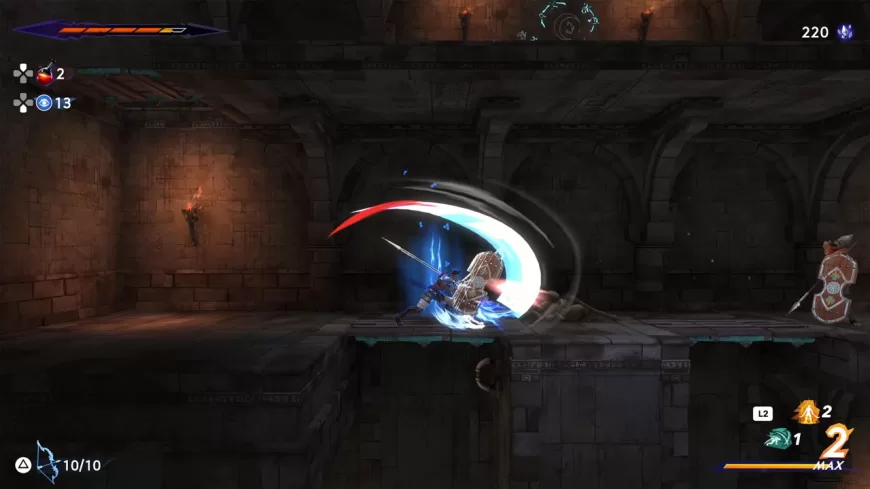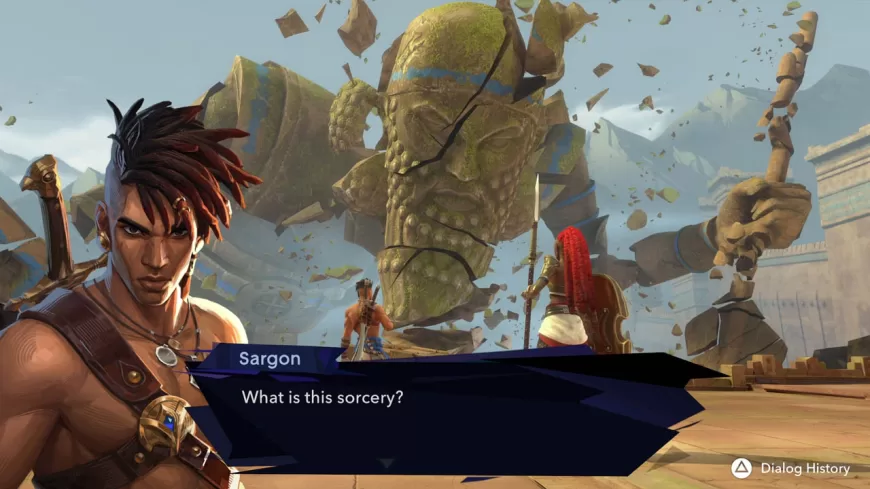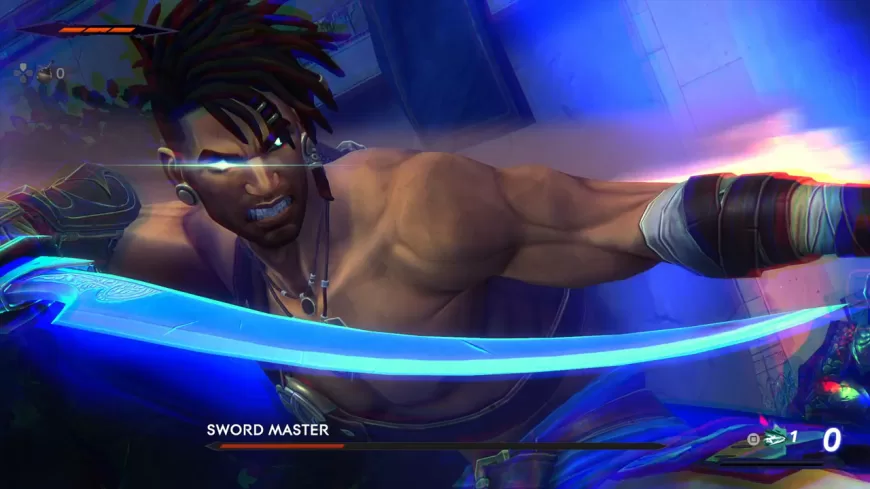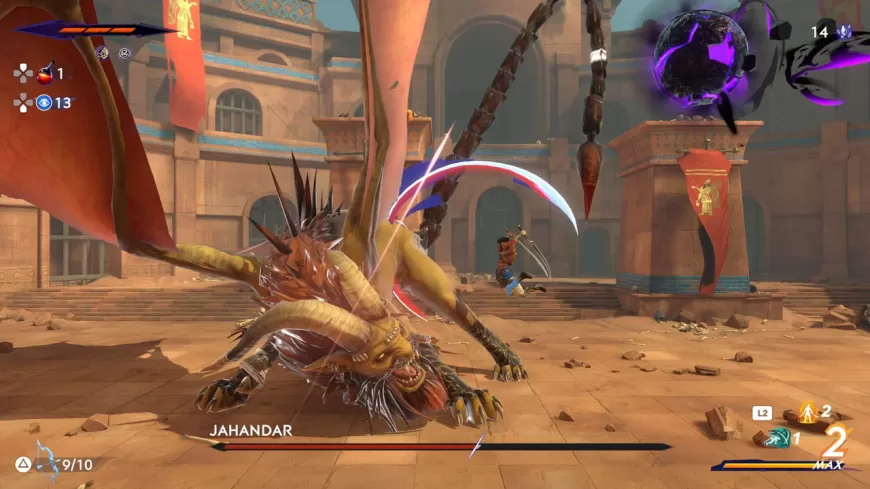Prince of Persia: The Lost Crown First Impressions | An Exciting Refresh
Time for an exciting new refresh to the series!
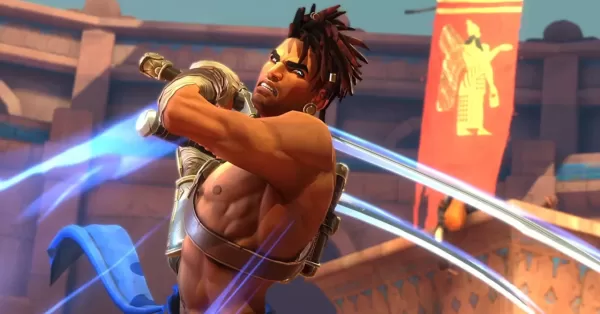
Prince of Persia has always a title that I’ve found myself drawn to ever since I played Prince of Persia: The Sands of Time. It was actually one of the first PlayStation 2 games I’ve played which also happened to be the first PlayStation console that I’ve ever owned so it WAS definitely a title that held a special place in my heart. I loved the time manipulation concept and fast-paced action that Sands of Time had but, for a few personal reasons, I just couldn’t follow through with the rest of the Sands of Time series. I have been wanting to get back into the newer Prince of Persia titles though so I was really happy when Ubisoft gave us the chance to get a sneak peek into the franchise’s latest upcoming entry through a special 3-hour hands-on gameplay session. After that small taste, I can honestly say that THIS is a game that I am absolutely looking forward to playing in full. Here are my Prince of Persia: The Lost Crown first impressions.
First off, let’s do a quick summary of the plot that we got to experience during the hands-on. You play as a brand new character to the franchise named Sargon. Sargon is part of a warrior group called The Immortals. Right after scoring a crucial victory in the battlefield, the Immortals seemingly find themselves caught in the midst of a betrayal by one of their own with the Prince of Persia, Prince Ghassan. Your group gives chase into Mount Qaf where the prince has been taken to. Almost immediately upon reaching Mount Qaf, you see that there’s something not quite right with this place as time seems to not work the same way in this place. As you go deeper, you find out that there are much much more mysteries that you need to solve about this place and about the kidnapping of the prince.
Now for the longest time ever since the 2003 series reboot starting with Sands of Time, the Prince of Persia games have always been 3D action games with an emphasis on platforming and puzzle-solving. This was a stark contrast to the DOS games which was just a 2D platformer. The biggest change that you’ll notice with Prince of Persia: The Lost Crown is how this title kind of stands somewhere in between those 2 eras with Lost Crown being a 2.5D action-adventure metroidvania game. And honestly, I LOVE this change as the various changes they implemented makes Lost Crown feel like so fresh while still sticking to the essence of a Prince of Persia game. Allow me to break this down though into two main aspects of the game that really stood out for me – Visuals and Gameplay.
First, let’s talk visuals. Yes, this Prince of Persia is no longer 3D but let it be said that this game looks REALLY good. Each level and almost every detail that I saw was a feast for the eyes. The characters look great and are quite memorable. The art direction used lets each of these characters stand out in their own way and this actually solves a gripe that I had with the previous Prince of Persia games that I played. My issue was that the earlier games felt pretty empty. Aside from certain scenes and cinematics, it always felt like you were just alone making your way through one puzzle after another with a few baddies here and there to slay. On the other hand, the world of Lost Crown actually fills LIVED in. The Immortals pop in and out talking to you about their experience in the time distorted Mount Qaf and show themselves struggling to make things make sense. You also then have NPCs in what seemed like a central hub that you come back to every now and then. These NPCs talk and interact with you as actual denizens of the region. There was even a prison with actual prisoners, an archive with mad Alchemists roaming the halls… As simple as these sound, these are significant changes to the feel that I got used to playing the Sands of Time series. As for attacks, special attacks (called Athra Surges), and even enemy attacks, they look so very smooth and grand which actually kept combat interesting with fights being quite a treat to do and watch.
Now, let’s talk about gameplay which is probably the biggest change to the Prince of Persia formula for this title. Yes, the game is now a metroidvania and I won’t delve too much into that since you more or less already know how that type of gameplay works especially if you’ve played titles like Ori, Hollow Knight, and more. I personally love this type of gameplay and, from what I’ve seen, Lost Crown pulls it off quite well. Part of the metroidvania package is the whole aspect of getting new gear as they come which allows you to do more things and lets you interact with more of the world that you’re in. With that out of the way, let’s head on over to game systems and combat. Since I’ve only played around 3 hours, I’m sure there are way more things that you will unlock down the line but for what I did see, there were 2 main things that you needed to manage – Amulets and Athra Surges.
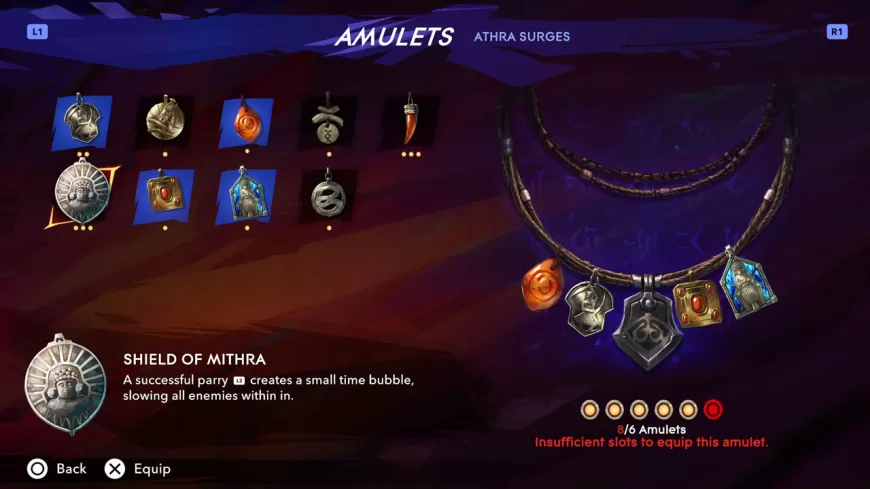
Amulets give you additional power-ups to use both in and out of combat. They could be both bought from vendors and picked up as loot in the world. While it is a simple system, it is one that pretty much worked in my eyes as the game gave you a lot of choice in how you approach your playthrough. In a nutshell, the game gives you a number of amulet slots. I believe I ended my session with 6. The thing is, not all amulets are worth 1 slot. The simple ones that give you more life or convert damage into Athra build-up (aka your SUPER meter) usually only take up one slot but some of the more complicated ones like the Shield of Mithra that lets you make Time Bubbles (which slows all enemies inside it) whenever you do a successful parry. That one is worth 3 amulet slots.
Athra Surges on the other hand are special moves that you can only do once you have enough charge on your Athra build-up meter. Imagine a Super Meter in a fighting game – that’s pretty much what Lost Crown has where you can do huge super moves at the cost of that meter. In terms of management, the game only lets you equip so many Athra Surges and you have to manage which you’re bringing in as you need to be in a save spot switch them up (same goes for amulets). Just like amulets, some Surges costs 1 meter and some will cost more and, of course, each Surge does a different thing.
Now, lets get into ACTUAL COMBAT. The system that Lost Crown has is pretty interesting and has a good amount of depth. In addition to the usual attacks, the game also gives you a slide/evade and parry. I even took the combat tutorial and it showed me the various ways that I could that I could combo and string attacks together while doing air juggles, shield breaks, and more. Yes, it will seem a bit daunting but I will say that the game will let you get by simply by doing the more simple attack strings. However, the game also makes it rewarding for players to learn the various combat styles and to master the timing between hits as pulling off these strings does make combat a lot safer and a lot more efficient for you. You’ll feel this even more especially when you go up against the many bosses that this game will throw at you. As I said, there are aspects like timing that you really have to get down but, once you take the time to do so, it makes combat just feel so much better. What blows me away about all this is that this is just 3 hours into the game. I am honestly so hyped about seeing what other systems will be unlocked as you progress through the game.
In just 3 hours, Prince of Persia: The Lost Crown has already wowed me with what it has to offer and its safe to say that there is so much more. I’m so glad that this series refresh has taken this form as this has made me really look forward to the game’s full release. With its stunning visuals, stand-out characters, an interesting story, and a satisfying combat system, my Prince of Persia: The Lost Crown first impressions simply boils down to this – the game has a lot going for it and is amazingly promising. I’m quite excited that this is the Prince of Persia game that I’m returning to after so long.
Prince of Persia: The Lost Crown will be free to try starting January 11, 2024 and fully launches on January 15, 2024 for Nintendo Switch, PlayStation 4, Xbox One, Microsoft Windows, Xbox Series X and Series S, and PlayStation 5.


